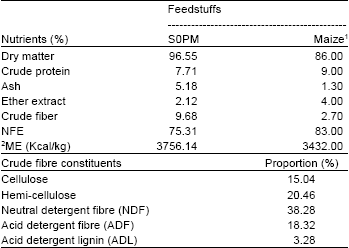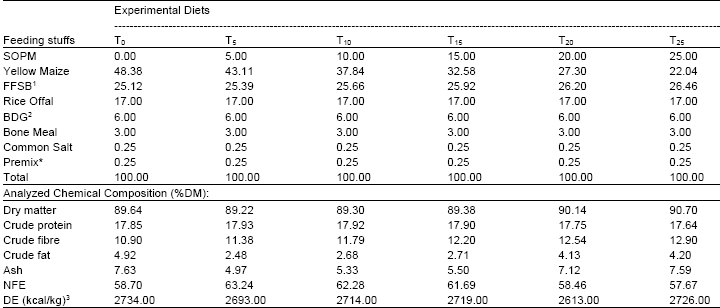Research Article
The Effect of Dried Sweet Orange (Citrus sinensis) Fruit Pulp Meal on the Growth Performance of Rabbits
Department of Animal Health and Production, Akperan Orshi College of Agriculture, P.M.B. 181, Gboko, Nigeria
O.I. A. Oluremi
Department of Animal Nutrition, University of Agriculture, P.M.B. 2373, Makurdi, Nigeria
F.O. I. Anugwa
Department of Animal Nutrition, University of Agriculture, P.M.B. 2373, Makurdi, Nigeria













